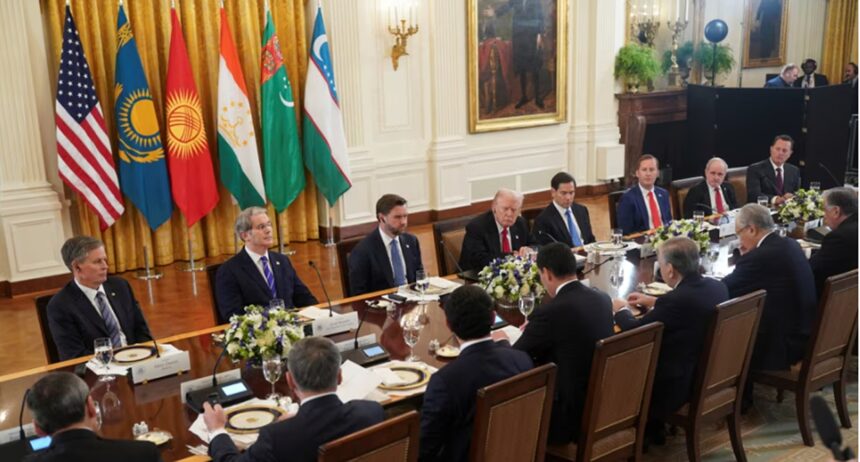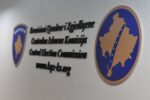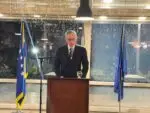U.S. President Donald Trump presented a series of trade, diplomatic, and mineral agreements while hosting leaders from Central Asia at a summit and working dinner aimed at strengthening Washington’s influence in the region.
Accompanied by U.S. Secretary of State Marco Rubio and Vice President JD Vance, Trump stated during a long roundtable at the White House that he is committed to making U.S.-Central Asia relations “stronger than ever before,” while the presidents of Kazakhstan, Kyrgyzstan, Tajikistan, Turkmenistan, and Uzbekistan described this as a new era of cooperation.
Before the working dinner, Kazakhstan announced a major mineral agreement through a new joint partnership with the United States to develop one of the world’s largest untapped tungsten reserves located in Kazakh territory.
Under the agreement, the U.S. company Cove Kaz Capital Group will hold 70 percent of the shares in this joint project with Kazakhstan’s state mining company, and the total project cost is estimated at $1.1 billion. Meanwhile, the U.S. Export-Import Bank will issue a letter of interest to finance the project with $900 million.
Among the agreements reached during the summit was also a deal, for which detailed information is not yet available, concerning the sale of up to 37 Boeing aircraft to the national airlines of Kazakhstan, Tajikistan, and Uzbekistan. Diplomatically, Kazakhstan also expressed its interest in joining the Abraham Accords, the U.S.-led framework for cooperation between Israel and Arab and Muslim states.
U.S. officials said that the summit aimed to signal a renewed commitment by the United States to engage more sustainably with Central Asia.
“Often we spend too much time focused on crises and problems, which deserve attention, but sometimes we do not dedicate enough time to new opportunities,” Rubio said during a working breakfast with the five Central Asian leaders on November 6. “And this is exactly what exists now: a new opportunity in which the national interests of our countries align.”
Central Asia is seeking to balance its trade and security relations, still largely dominated by China and Russia, by deepening its ties with the United States.
The Washington summit follows other efforts by major powers this year to strengthen relations with the region. Russian President Vladimir Putin participated in a summit in Tajikistan in September with other Central Asian leaders, while Chinese leader Xi Jinping visited Kazakhstan in June for a meeting with the region’s presidents. The European Union also held a summit with regional leaders in April in Uzbekistan to discuss infrastructure investments and access to Central Asia’s critical minerals.
Mineral resources were again a focus in Washington, as the region holds large reserves of rare earth minerals—17 elements used in everything from wind turbines to smartphones and fighter jet engines—as well as significant deposits of uranium, copper, gold, and other strategic minerals essential for global efforts toward greener forms of energy.
Pini Althaus, CEO of Cove Kaz Capital Group, which signed the tungsten agreement in Kazakhstan, called the deal “a major victory for the U.S. and its critical mineral needs” and told Reuters that President Trump and U.S. Secretary of Commerce Howard Lutnick helped negotiate the agreement to prevent Chinese companies from developing this strategic reserve.
The agreements follow a truce in the trade war between Beijing and Washington, as well as an increasingly intense competition between the U.S. and China over rare earth mineral exports, a key point of contention during their trade negotiations. This led to a one-year pause on some Chinese export restrictions following a meeting at the end of October between Trump and Xi.
Now, Washington is seeking new ways to bypass Beijing in the trade of these minerals, as China produces around 70 percent of the world’s rare earth minerals and controls about 90 percent of their processing.
While Central Asia may serve as a long-term source, the region hopes that the new investments will help it develop these resources.







